You are using an out of date browser. It may not display this or other websites correctly.
You should upgrade or use an alternative browser.
You should upgrade or use an alternative browser.
Snaphaunce era Weaponry
- Thread starter jsn
- Start date

Help Support Muzzleloading Forum:
This site may earn a commission from merchant affiliate
links, including eBay, Amazon, and others.
Thats a nice musket. Is that a lock you made or a kit you built?
Carteret Kid
45 Cal.
- Joined
- Aug 31, 2004
- Messages
- 689
- Reaction score
- 137
I believe there is a real market for Buccaneer Muskets. Right now pirate reenactors have to make do with something later era.smoothbore addict said:If you put out a good snaphaunce lock at a reasonable price they'll sell themselves. I'd buy one. "Ricky" has put a bug in my bonnet that i don't see getting rid of anytime soon. Damn you Rick :haha: :haha: :haha:
- Joined
- May 24, 2005
- Messages
- 5,494
- Reaction score
- 5,301
DITTO!!
- Joined
- May 24, 2005
- Messages
- 5,494
- Reaction score
- 5,301
OddFellow: That gun is a beauty!! And the lock is in the true English (vs Dutch) fashion. :hatsoff: :bow: Rick.
- Joined
- May 24, 2005
- Messages
- 5,494
- Reaction score
- 5,301
Hi Andy! That's right. Blame it all on me. :idunno: :blah:
I know there is more than one early lock fanatic on this Forum. :haha:
What I like about these early lock mechanisms is the somewhat "contraptionalized" look about them. Notice that the pre-1650 firearms all have that sort of "experimental" look to them. :haha:
Rick.
I know there is more than one early lock fanatic on this Forum. :haha:
What I like about these early lock mechanisms is the somewhat "contraptionalized" look about them. Notice that the pre-1650 firearms all have that sort of "experimental" look to them. :haha:
Rick.
:haha: :blah: :youcrazy: right back at ya!!!!
You know I cant leave well enough alone. If you took an English lock, removed the pushrod and sliding pan cover, and then welded a pan cover to the bottom of the frizzen, then grooved the frizzen face, added a dog to the outside rear of the plate to engage with the tail on the cock for a safety, you'd have a first generation flintlock upgrade done to a snaphaunce lock. :hmm: :hmm: :hmm:
You know I cant leave well enough alone. If you took an English lock, removed the pushrod and sliding pan cover, and then welded a pan cover to the bottom of the frizzen, then grooved the frizzen face, added a dog to the outside rear of the plate to engage with the tail on the cock for a safety, you'd have a first generation flintlock upgrade done to a snaphaunce lock. :hmm: :hmm: :hmm:
- Joined
- May 24, 2005
- Messages
- 5,494
- Reaction score
- 5,301
Here is an original snaphaunce lock. It's Moroccan, but made mostly in the English manner. Notice the similarities. The amazing thing about this lock is that it is virtually unused condition. The tumbler and sear have almost no wear. Thought ya'll like to see it. :wink: Rick.
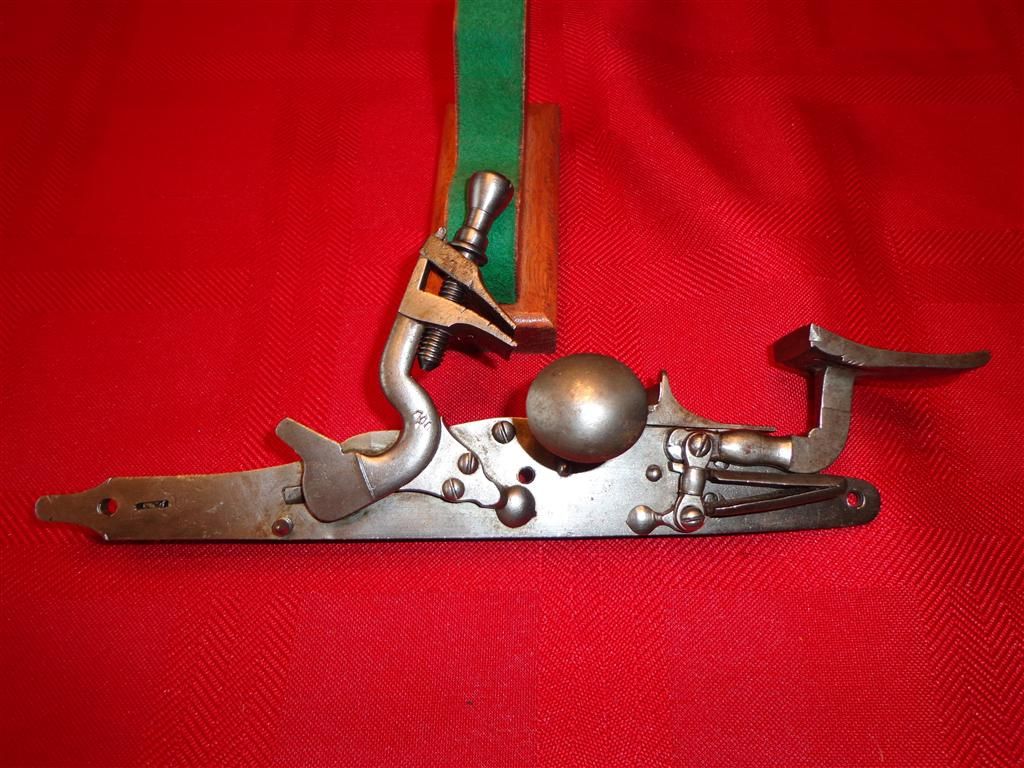
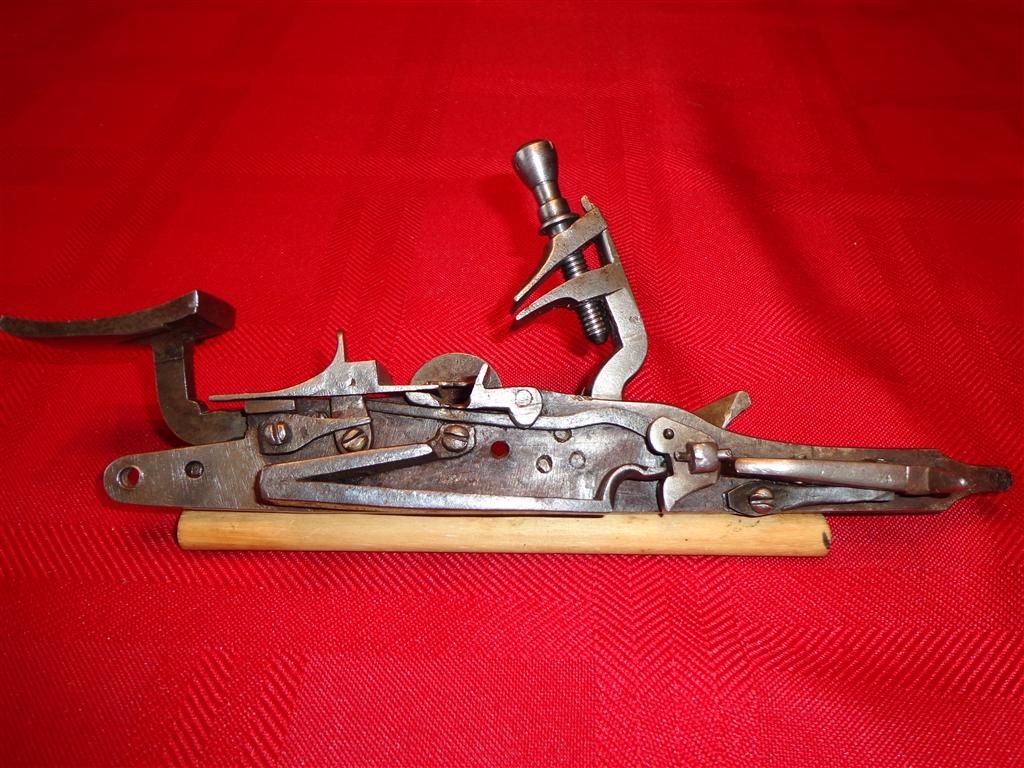
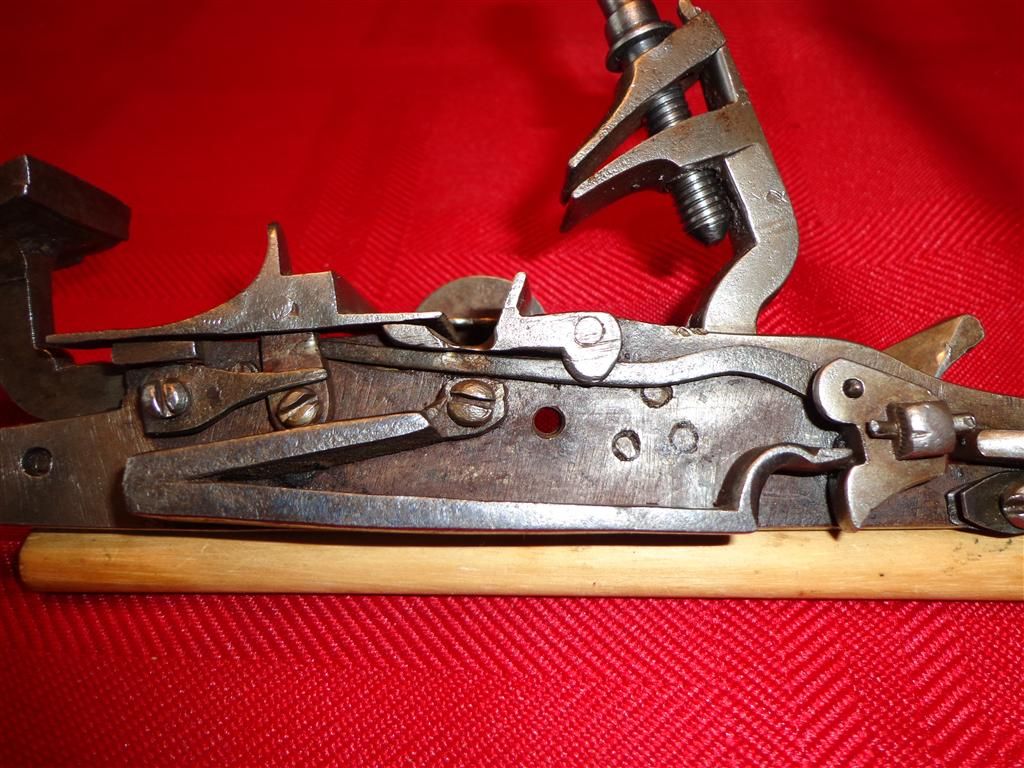

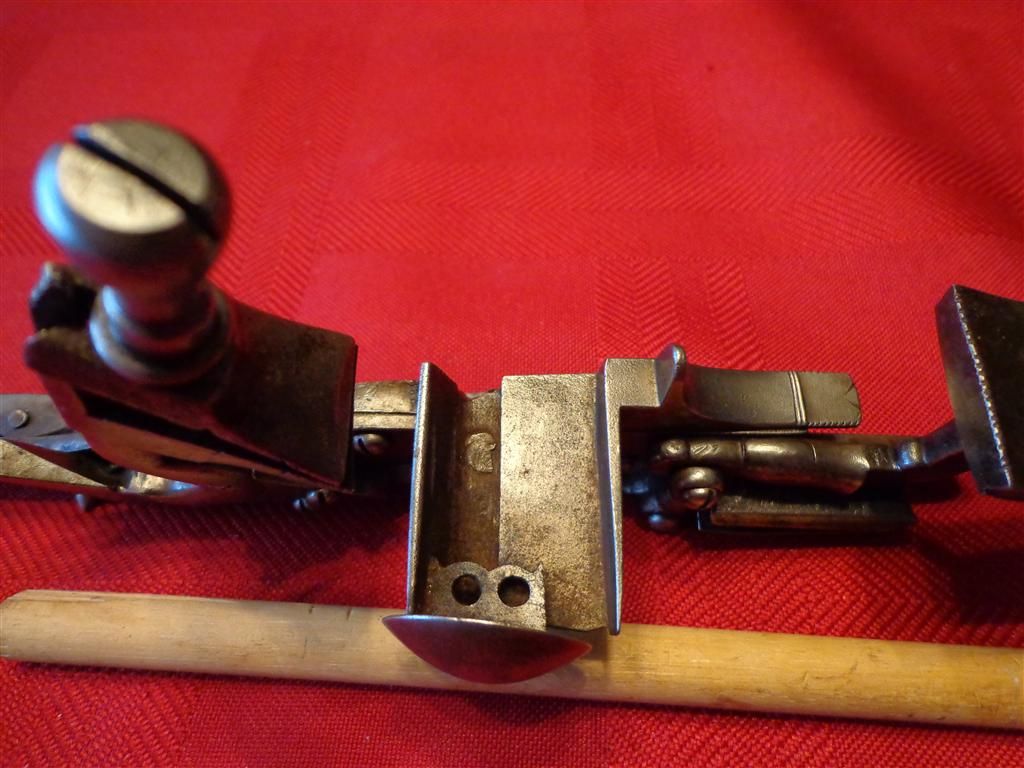
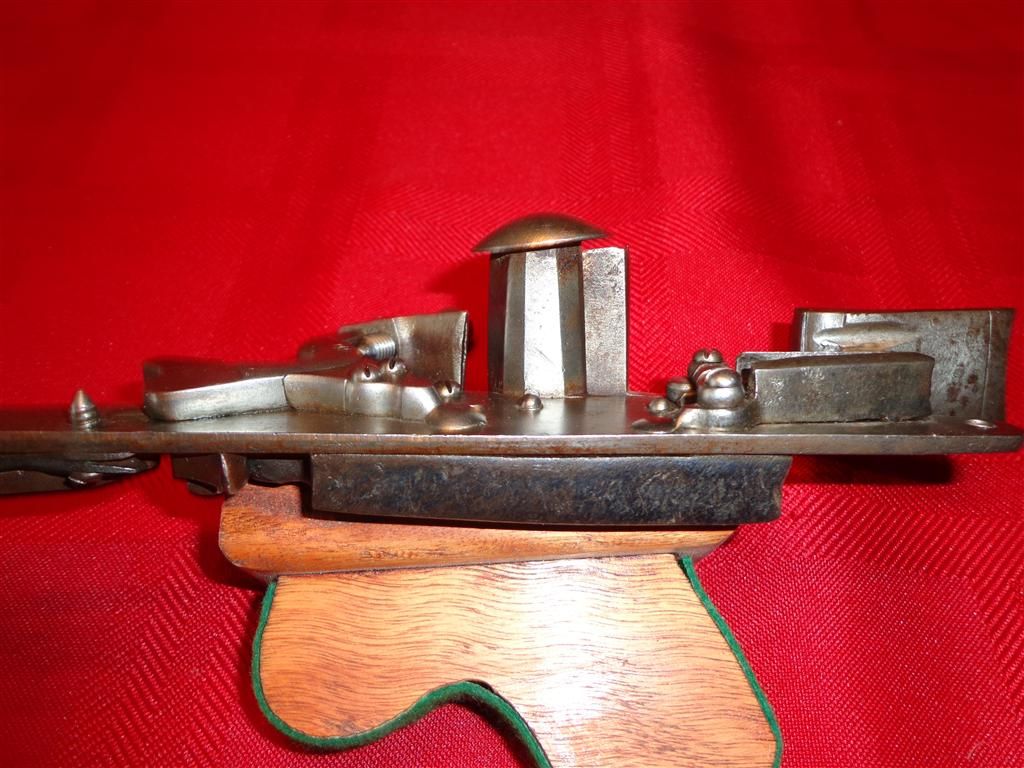






Way cool Rick. What do you suppose the two holes in the flange thats in the pan are for? Plus, the pan cover seems really long. Does it interfere with the movement of the frizzen arm? It looks like you can't possibly close the pan cover unless the gun is cocked and you can't put the frizzen into battery unless the pan cover is closed. 
It also looks like the belly of the pan has been filed out of round. I wonder if that was due to poor placement of the touch hole?
Rick, Ilooked at the tumbler and sear and noticed a few things. The file work is much cleaner then the rest of the internals. The color of the metal is also slightly different. Is it possible these are much later replacements by a talented smith to keep an older firearm in service?
i guess looking at the top view better would have answered the question of interference. I didnt notice at first the narrow portion on the forward end of the pan cover. Still, all in all, a really cool lock.
Whats up with the threads on the cock jaw screw? The tops of the lands look flat. Is that period? they look perfect enough to have been done on a screw machine.
Whats up with the threads on the cock jaw screw? The tops of the lands look flat. Is that period? they look perfect enough to have been done on a screw machine.
very nice piece!
The lock I built would have been better if I had forged it rather than casting, the casting gates and the like were all over the piece in horrible places I had to do alot more creative cuts and the like to get it functioning. Also casting errors caused some finish problems, it was not as easy to do as a forging for me.
The lock I built would have been better if I had forged it rather than casting, the casting gates and the like were all over the piece in horrible places I had to do alot more creative cuts and the like to get it functioning. Also casting errors caused some finish problems, it was not as easy to do as a forging for me.
i've never seen a lock like that. Is it a late snaphaunce? The lock plate looks like early 1700's french or spanish maybe. Either way it's really cool and further proof that the "norm" was constantly challenged and strayed from. I just love the oddball stuff. Keep-em comin.
I think the balls in your court Rick. What ya got for us?
I think the balls in your court Rick. What ya got for us?
Carteret Kid
45 Cal.
- Joined
- Aug 31, 2004
- Messages
- 689
- Reaction score
- 137
In many technologies, the machine starts out looking raged and jumbled together,then the mature versions start looking neater and simpler as they become more advanced.ricky said:Hi Andy! That's right. Blame it all on me. :idunno: :blah:
I know there is more than one early lock fanatic on this Forum. :haha:
What I like about these early lock mechanisms is the somewhat "contraptionalized" look about them. Notice that the pre-1650 firearms all have that sort of "experimental" look to them. :haha:
Rick.
The lock is a copy of an original Italian. The stock is French. The barrel is Colrain. The furniture is silver and the gun is mated to a silver-guarded colichemarde blade sword*...
http://www.youtube.com/watch?v=IisZvpR1PIM
*I have Cold Steel's excellent set but this link is for forum readers' demonstration purposes only and not the exact sword I'm talking about above...
http://www.youtube.com/watch?v=IisZvpR1PIM
*I have Cold Steel's excellent set but this link is for forum readers' demonstration purposes only and not the exact sword I'm talking about above...
Last edited by a moderator:
It's a truly beautiful compilation of styles. What is the intended purpose and manner of carry? What time period does it represent? Do you have a character you represent?
- Joined
- May 24, 2005
- Messages
- 5,494
- Reaction score
- 5,301
smoothbore addict said::haha: :blah: :youcrazy: right back at ya!!!!
You know I cant leave well enough alone. If you took an English lock, removed the pushrod and sliding pan cover, and then welded a pan cover to the bottom of the frizzen, then grooved the frizzen face, added a dog to the outside rear of the plate to engage with the tail on the cock for a safety, you'd have a first generation flintlock upgrade done to a snaphaunce lock. :hmm: :hmm:
:hmm:
Like this? English/Jacobian lock.
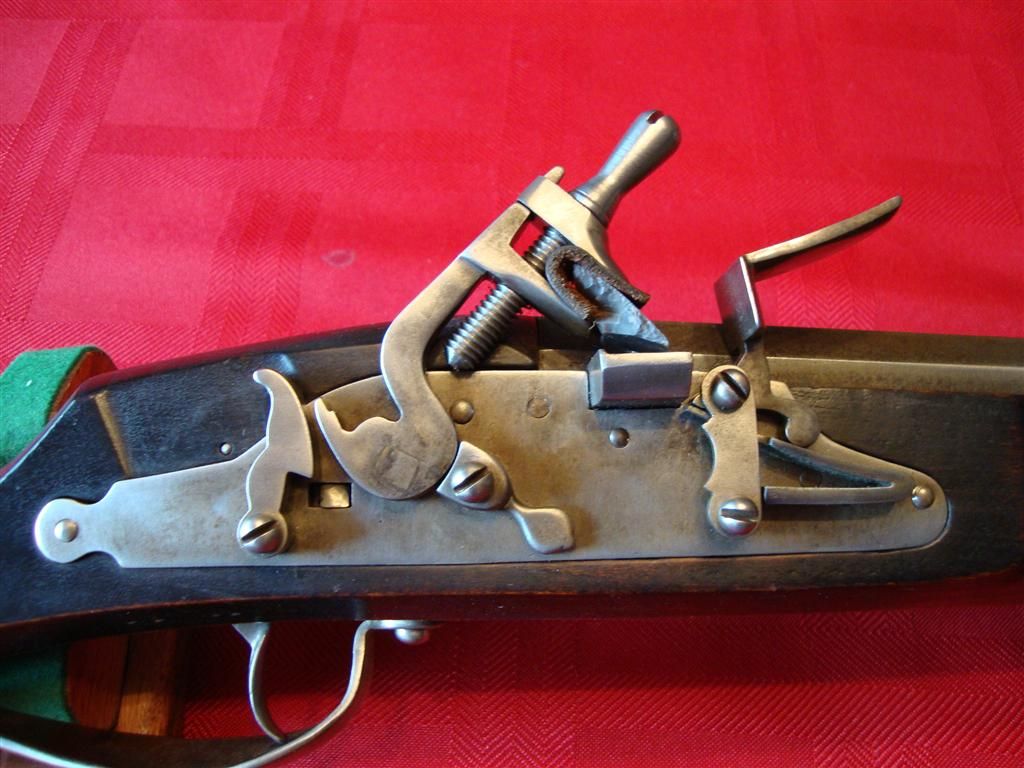
- Joined
- May 24, 2005
- Messages
- 5,494
- Reaction score
- 5,301
smoothbore addict said:Way cool Rick. What do you suppose the two holes in the flange thats in the pan are for? Plus, the pan cover seems really long. Does it interfere with the movement of the frizzen arm? It looks like you can't possibly close the pan cover unless the gun is cocked and you can't put the frizzen into battery unless the pan cover is closed.
Hi Andy. After the hammer is cocked, the pan is primed, the pan cover is manually closed, and the battery (frizzen) is lowered on top of the pan cover. When the sear is released the hammer moves forward toward the battery - and at the same time pushes the pan cover open to expose the priming powder (sort of like a wheel lock). Rick. :haha:
Similar threads
- Replies
- 8
- Views
- 522






